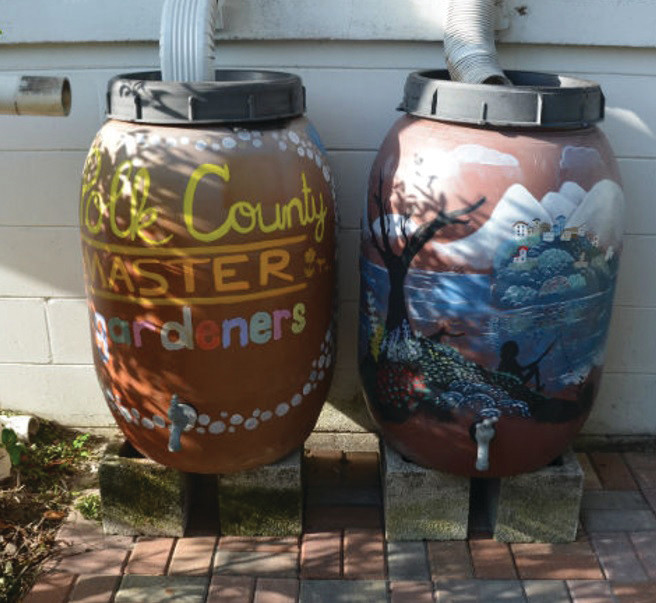Conserving water through rain water harvesting
Water resources in Florida are increasing in demand from all sides; residential, commercial, agricultural and industrial. As our state is projected to increase in population by 6 million people by …
This item is available in full to subscribers.
Attention subscribers
To continue reading, you will need to either log in to your subscriber account, or purchase a new subscription.
If you are a current print subscriber, you can set up a free website account and connect your subscription to it by clicking here.
If you are a digital subscriber with an active, online-only subscription then you already have an account here. Just reset your password if you've not yet logged in to your account on this new site.
Otherwise, click here to view your options for subscribing.
Please log in to continueDon't have an ID?Print subscribersIf you're a print subscriber, but do not yet have an online account, click here to create one. Non-subscribersClick here to see your options for subscribing. Single day passYou also have the option of purchasing 24 hours of access, for $1.00. Click here to purchase a single day pass. |
Conserving water through rain water harvesting
Water resources in Florida are increasing in demand from all sides; residential, commercial, agricultural and industrial. As our state is projected to increase in population by 6 million people by 2030, many are wondering how we are going to keep up with the increasing demand of water. There are many solutions to reduce the impacts to our water resources, one of those being the use of rain barrels or cisterns.
Rain harvesting by use of rain barrels or cisterns collects rainwater from a building’s rooftop. With an average of 52 inches of rainfall each year, Florida is the perfect location to reuse rainwater for outdoor purposes. Potential applications can be hand watering of your vegetable garden or crops, washing your car or pets, or even refilling fountains or ponds.
What is the difference between rain barrels and cisterns?
Rain barrels are normally used for smaller applications, such as residential homes and barns and commonly refer to a 55-gallon barrel as the collection container. You can have a single rain barrel on your site or have multiple barrels to increase the amount of water collected. Cisterns are basically large-scale rain barrels that catch a much larger volume of rain water to be reused. They can be stationed above ground or buried below ground level, depending on site conditions.
What are the pros and cons of water collection?
Rain water collection has many benefits including reduction of stormwater runoff, reduction of the stress of treatment systems, is generally a reliable source of irrigation for landscape and crops and can potentially reduce your residential water bill through reduced water consumption.
Some potential problems that can come with water collection are the initial cost of purchasing a container, especially if you are looking at cisterns as a method, which can be expensive. Water should not be used for human consumption as it could contain bacteria or other contamination harmful to humans. Some watering applications by a rain barrel may not be feasible. For example, it would take about forty 50-gallon rain barrels to irrigate the average Florida yard once. However, rain barrels are a great starter if you are looking to collect and reuse rainwater.
Water Collection Consideration
Rain barrels and cisterns can be applied to any number of sites and locations. If there is a roof, you can collect rain from it. You should consider several factors before starting down this path however. If you are interested in a cistern, you need to calculate the square footage of your roof to figure out what size storage container you might need.
It is not exact, but you can use the square footage of your home as a rough estimate. Based on a general rule of 1-inch of rain on 1,000 square feet of roof will produce 600 gallons of water, calculate your total of gallons you can collect per 1-inch of rainfall. An average 2,000 square foot home can potentially collect over 60,000 gallons of water per year.
While there are no state laws that restrict rain water collection, there may be local ordinances that restrict where cisterns need to be located. You should check with your local county zoning or code enforcement to check if there are any ordinances pertaining to water collection.
Because it is a container of standing water, the rain barrel should have a lid or fine mesh covering the opening to prevent mosquito populations. Both rain barrels and cisterns need to have good filtration to remove any leaves, shingle particulates, or other contaminates that may have collected from the roof.
If you are interested in learning more about water collecting or other options for conserving water resources, please contact your local UF/IFAS county extension service. If you have any questions about firewise landscaping, other landscape and garden topics, or need plant or pest materials identified, contact the University of Florida/IFAS Extension Office online at http://www.clay.ifas.ufl.edu, follow us on Facebook, or call by phone at (904) 284-6355.









